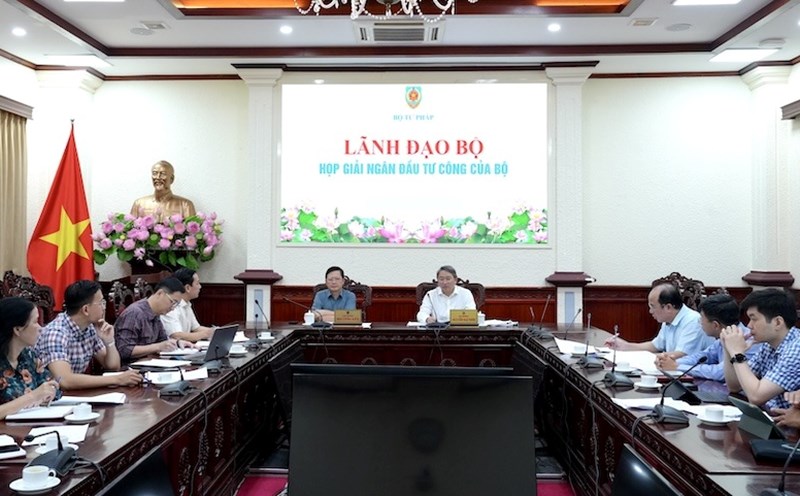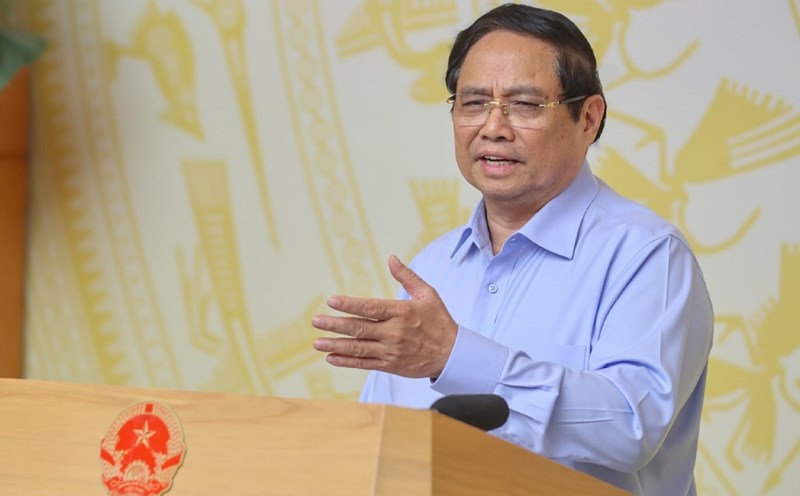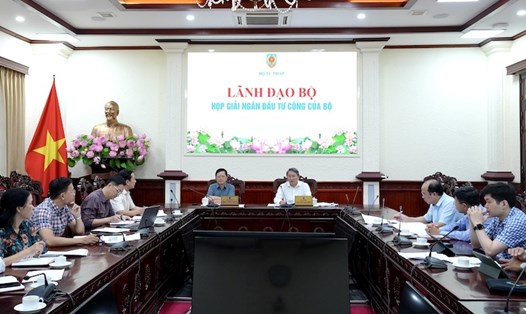Disbursement progress is still slow
According to information from the Ministry of Finance, the total state budget public investment plan (NSNN) in 2025 assigned by the Prime Minister is VND 899,180.2 billion, including VND 423,452.9 billion of central budget (NSTW) and VND 475,727.3 billion of local budget (NSDP).
Including the increased capital allocated by local state budget balances of VND 161,451.2 billion, the total plan allocated in 2025 will reach VND 1,060,631.4 billion.
The total amount of capital allocated in detail is 871,041.6 billion VND, equivalent to 96.9% of the plan assigned by the Prime Minister. The capital that has not been allocated in detail is VND 28,138.6 billion, accounting for 3.1%, including VND 28,045.8 billion of state budget capital and VND 92.8 billion of state budget capital.
As of October 23, 2025, the actual disbursement amount reached VND 464,828 billion, equivalent to 51.7% of the plan assigned by the Prime Minister. Compared to the plan, there are still 29 ministries, central agencies and 16 localities with disbursement rates below the national average.
Many problems delay progress
The Ministry of Finance said that the arrangement and reorganization of administrative units and the shift to the two-level local government model have caused some localities to not be able to fully comply with the apparatus, lacking a full-time project management board; officials having to concurrently hold many tasks; some newly merged communes do not have a focal point in charge of public investment. Many projects have not been transferred to the investor, the handover documents are slow; the merger process creates many land price lists in the same locality, making it difficult for compensation and site clearance.
The system of mechanisms and policies related to implementation still has problems; some new problems arising from practice have affected construction progress and disbursement.
Regarding compensation and site clearance, although many localities have focused on implementation, it is still a major bottleneck. The determination of compensatory land prices is prolonged due to difficulty in reaching consensus with the people; complicated land price determination procedures lead to delays in site handover, affecting the construction progress and disbursement of the lines.
For ODA projects, the process of negotiating, signing, and international payments is prolonged; approving loan agreements may take 12-18 months due to compliance with lending regulations. Some projects have to be suspended due to changes in sponsors.
Some project management boards, investors, and contractors have not been proactive, are still hesitant and avoiding responsibility; have limited capacity, lack of human resources and equipment; progress and estimates are not close to reality; coordination between units is not tight.
The weather is also an unfavorable factor. Many major storms in the past 4 months, in September alone, recorded 4 storms, of which storm No. 10 caused heavy damage, causing heavy rain, floods, landslides, strongly affecting the construction progress of projects, especially key traffic works.
Four key groups of solutions
To strive to disburse 100% of the public investment capital plan in 2025 and contribute to achieving the growth target of 8.38.5%, it is necessary to synchronously deploy solutions.
First, promote the implementation of tasks and solutions assigned by the Government and the Prime Minister in resolutions, telegrams and directives; promote the role of the leader in leadership and management; immediately overcome limitations, learn effective models from units with high disbursement rates.
Second, the Ministry of Finance is reporting periodically every week on public investment disbursement to the Prime Minister and the Central Inspection Committee. Ministries, branches and localities need to review the situation of each project, develop a weekly plan; proactively transfer internal capital from slow-disbursement projects to well-disbursed projects; prepare payment records as soon as there is a collection volume.
Third, urgently complete the organization of the local apparatus according to the two-level government model; ensure the arrangement of competent staff for project management and implementation, especially in the site clearance and project management stages.
Fourth, ministries and ministerial-level agencies continue to review and synthesize problems related to mechanisms and policies for disbursement of public investment according to their functions and tasks to promptly resolve them.










